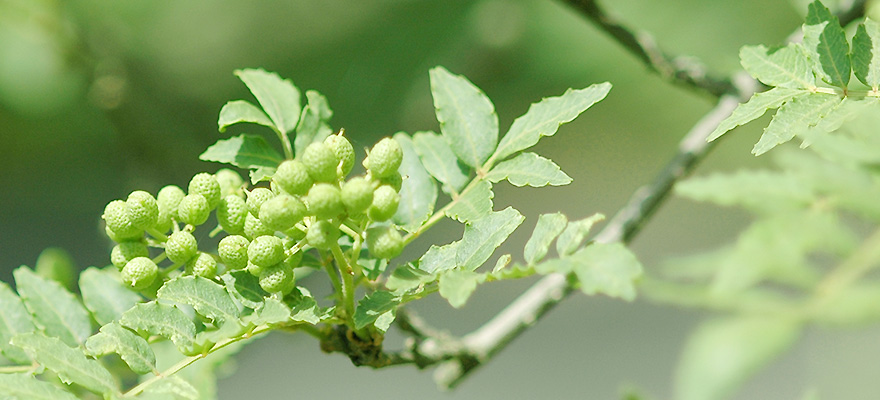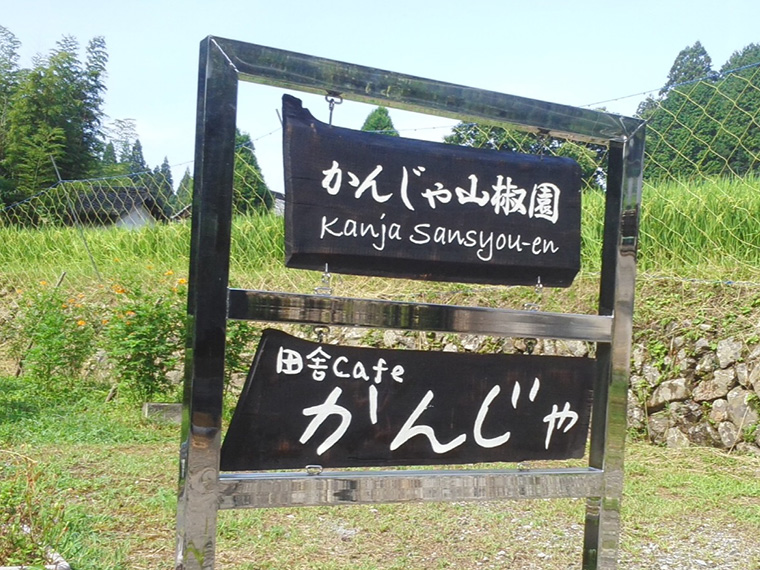
Direct from the sansho(Japanesepepper) capital of the Kishu region. We deliver high quality sansho at it's best.
The "Kanja Sansho Farm" is located in the valley in which the river "Aridagawa" flows. The cultivating of sansho has been a local tradition for generations and it is said to be the birthplace of "budo sansho" (lit: Grape Japanese pepper,named for the large, round, thick skinned bushel of drupes it produces).Not only do we produce the highest quantity of sansho in all of Japan, Kishu sansho is famous for its high quality. Furthermore, "budo sansho" is known only to grow in optimal conditions and relies on botanic knowledge acquired over generations. At Kanja Sansho Farm, we take pride in growing, harvesting and processing all of our products independently, on site, and delivering them to you in the best possible condition.
History of Sansho
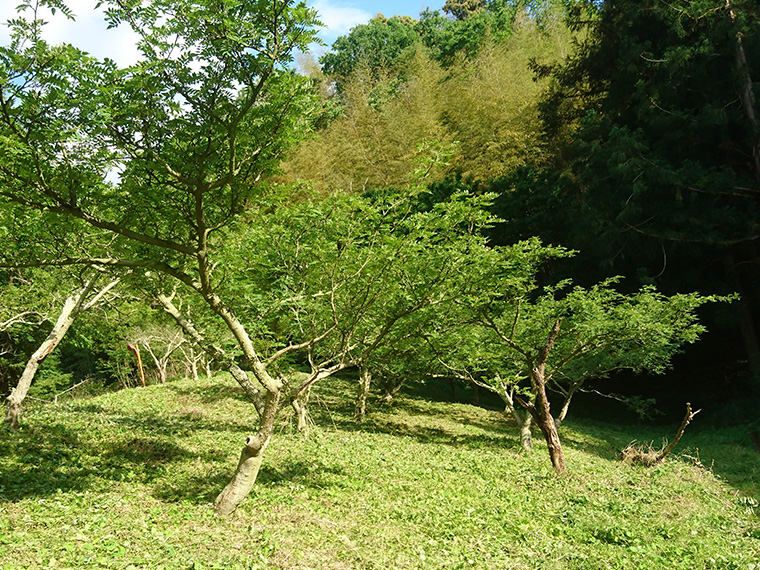
in japan sansho seed have been found in archaeological sites, some of whice date back 5000 years, suggesting it has been in use in some form since then. one thousand yeas ago sansho was a taxable product and was used among people of noble rankin(court nobles and high-ranking warriors.)
Ordinary people began to enjoy sansho about 400 to 500 yeas ago.
sansho was first used as a digestive medicine and an anthelmintic but because of its unique citrus aroma and electrifying hot flavor, it started to be used more generally as a spice.
budo sansho (grape sansho) is a variety of sansho first discovered about 180 years ago near Mt.Koya in aridagawa town wakayama prefecture.
Budo sansho produces a large grain and is a superior variety containing abundant aroma and other active ingredients.
Budo sansho has been cultivated for a long time and wakayama Prefecture , account for 70% of the nation production.
The power of Sansho
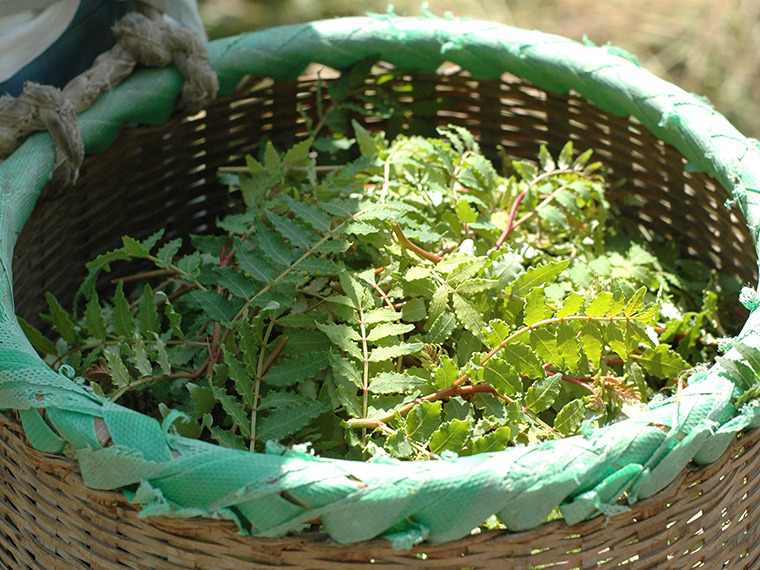
Sansho is deeply rooted in Japanese heritage.It has been used as both an spice for dishes and previously as a component of Japanese herbal medicine.Un til recently, awareness of Sansho had declined in modern」apanese society. Now, however, the power of sansho is attracting more attention. For some years, the ability of sansho to promote a healthy stomach and intestines, stimualte the digestive system and increase apettite has been well known. More recently, it is being highlighted for its ability to increase the brain's taste center's sensitivity to both umami and salty flavors. The hope is that more widespread use of sansho will allow for a reduction in the amount of salt required in cooking.
Product Introduction
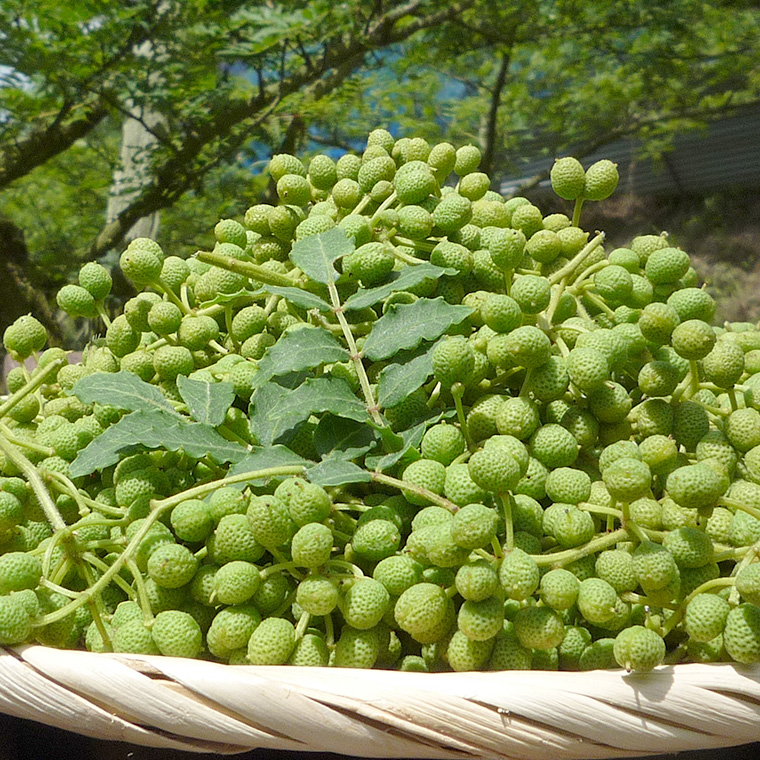
Raw Sansho
The characteristics of sansho change depending on the time it is harvested. With regards to processed sansho, a variety of techniques are available to extend the range of products available.
With raw sansho however, freshness is the secret to unlocking its flavor. We can deliver freshly picked sansho in a sealed pack in the shortness possible time. (some regions not included)
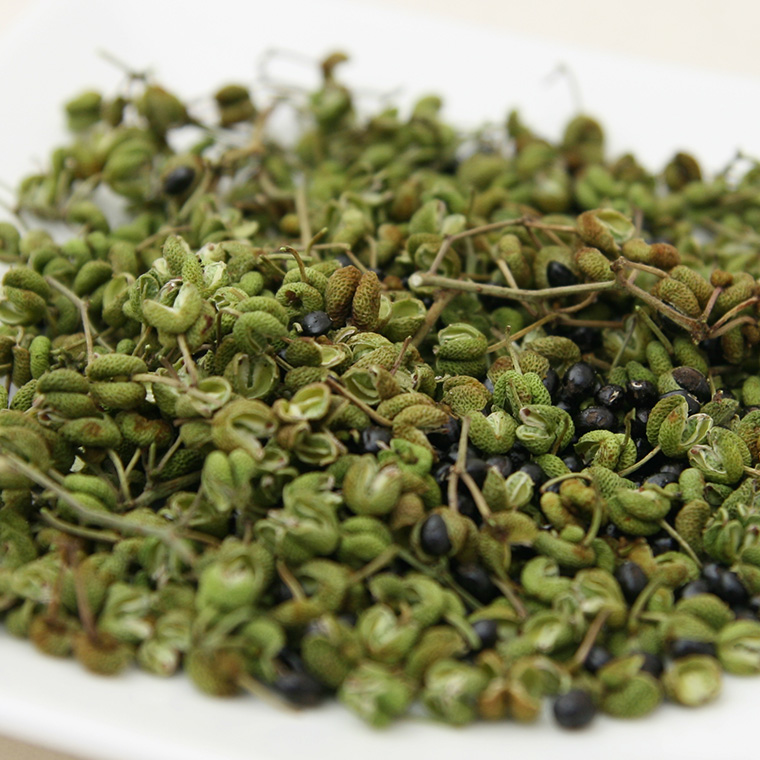
Dried Sansho
The best source of dried sansho is budo (grape) sansho, has long been the mantra of spice dealers and Chinese herbal medicine experts alike. The reasons behind its superior quality lie in the thickness of skin and large size. The skin is the area which contains the spiciest flavor and strongest fragrance, furthermore, it also has the largest potential usage for medicinal purposes.The name budo sansho comes from the Japanese word for grapes (budo).Ju st like its namesake, budo sansho produces large, round tassels of fruit akin to grapes.Th is type is an original speciality of the Shimizu, Aridagawa area, and to this day is only produced here.H ere at Kanja Sanshoen, we are committed to growing only "budo sansho" and have split the harvest periods in order to produce a wide variety of sansho based products.
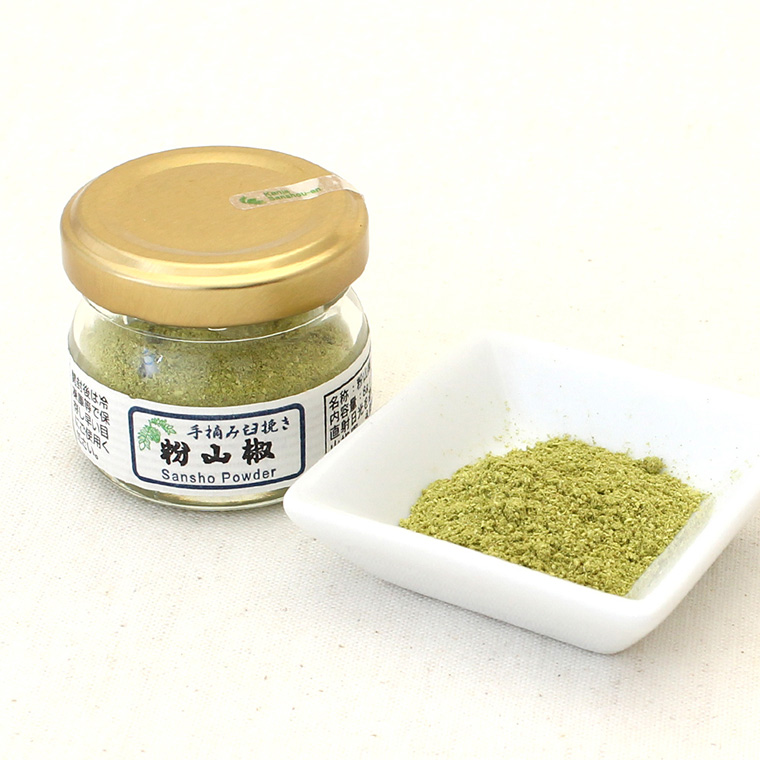
Processed Sansho Products
For those who want to enjoy sansho or other products at any time of the year.
Our motto is:"Creating delicious and safe products ranging from traditional to new and innovative ways of eating".
We put our best into each and every product we make using seasonal ingredients.
Occasionally, due to the differences in harvest periods or just the field the ingredients were taken from, differences between the same products bought at a different time may occur.
Additionally, depending on harvesting periods, availability of certain products may be limited.
Please understand that these are the limitations of small farms oroducing oroducts
Raw Sansho Products
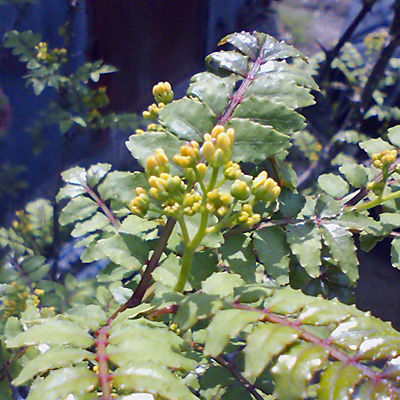
Sansho No Hana
Beginning of May
Typically, the male sansho flower plant is sold, however, we harvest and ship the female plant. The uniquely soft, sweet smell has a luxuriously noble aura to it.
When boiled in soy ("Tsukudani") it is thought of as an item of the highest quality.
It goes well with steak or as a condiment for "shabu shabu".
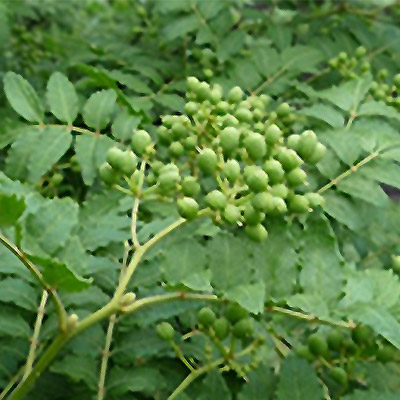
"Aomi Sansho E"
Raw Sansho E (early harvest)
100g/500g/1kg
Middle to End of May
The seed shells are white and the grains are on the smaller than its later harvest version,the fragrance and spiciness are both on the gentle side. When lightly boiled, such as in "tsukudani",the grains have the sensation of melting in the mouth and releasing a fresh and invigorating flavor.
Please use after boiling in salt and removing any excess sediment.
When making items such as "tsukudani" we recommend using the grains as they are.
Aside from staple "tsukudani" dishes such as "konbu" and "chirimen", there is also plenty of potential for inclusion in a variety of Chinese and Western recipes.
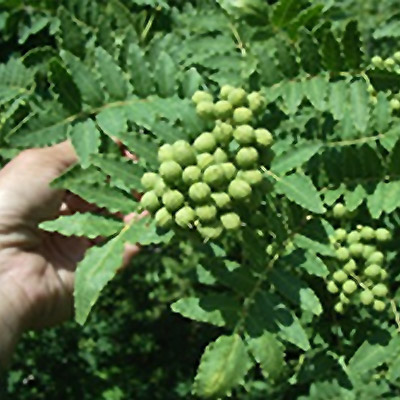
"Aomi Sansho M"
Raw Sansho M (mid harvest)
100g/500g/1kg
Beginning of June
Identifiable by their half-white shells, they have a strong fragrance and spicy flavor. As the shell is harder, they are suited to being ground or milled.
Combined with rice bran it can be used as a natural preservative with a refreshing aroma.
Note: Not suitable for use in "tsukudani" boiled dishes.
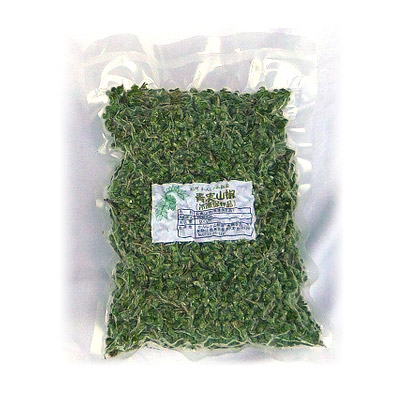
"Aomi Sansho E"
Raw Sansho E (with stalks)
100g/500g/1kg
From mid May onwards
A specialty of the Shimizu area. Sealed in a freezer pack to maintain freshness. A popular product among those who want raw sansho outside of the brief sans ho harvest window.
Supplies are limited please confirm availability.
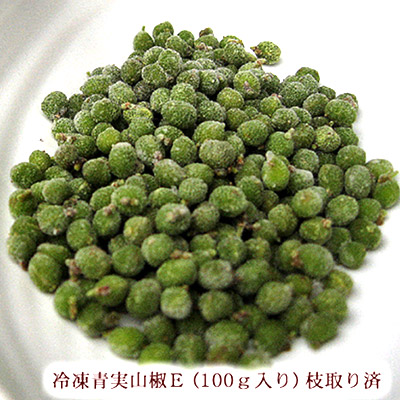
"Aomi Sansho E"
Raw Sansho E (no stalks)
100g/500g
From mid May onwards
A specialty of the Shimizu area. Sealed in a freezer pack to maintain freshness.A popular product among those who want raw sansho outside of the brief sansho harvest window.
The stalks have been removed prior to packing.
Supplies are limited please confirm availability.
Dried Sansho Products
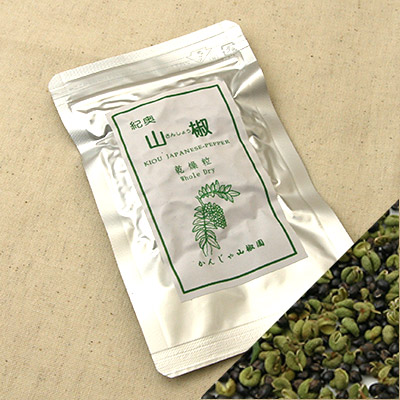
"Kiou Sansho"
dried sansho grains
n/a
Harvested 1 month earlier than typical sansho, it has a gentle, sweet citrusy fragrance.
Bearing more similarities to a herb than pepper, it is well suited to meat, fish and pasta dishes as well as dressings.
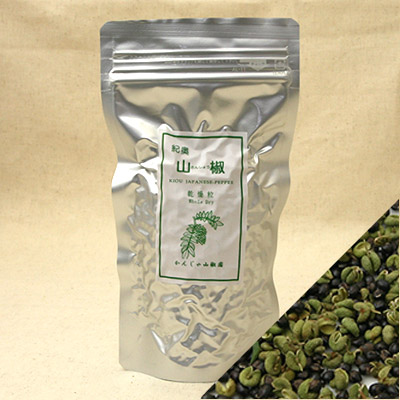
"Kiou Sansho"
dried sansho grains
M (mid term) with seeds and stalks
From middle of june
Harvested 1 month earlier than typical sansho, it has a gentle, sweet citrusy fragrance.
Bearing more similarities to a herb than pepper, it is well suited to meat, fish and pasta dishes as well as dressings.
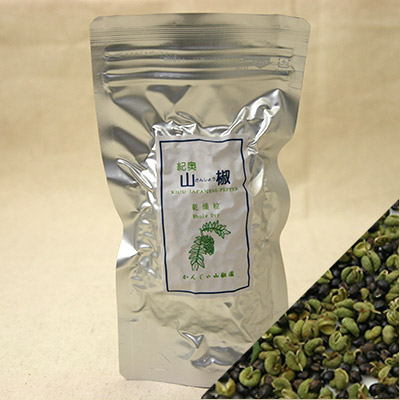
"Kiou Sansho"
dried sansho grains
L (late term) 〈with seeds and stalks〉
Beginning of August onwards
Conventional sansho with a characteristic strong citrusy fragrance and spicy flavor.
Bearing more similarities to a herb than pepper, it is well suited to meat, fish and pasta dishes as well as dressings.
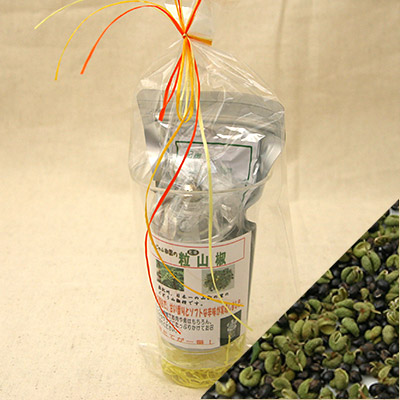
"Kiou Sansho"
dried sansho and grinding mill set
An acrylic grinding mill set complete with "Kiokuyama dried sansho grains" that can be used easily anytime at the dinner table. Wrapped in a cute package it makes for a popular gift.
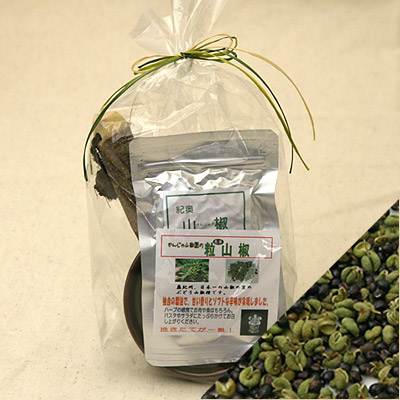
"Kiou Sansho"
dried sansho mortar and pestle set.
A set of Kiokuyama dried sansho complete with mortar and Order wooden pestle.The wooden pestle is made from wood taken from a sansho tree.As trees age,eventually they need to be replaced with ay ounger generation,these pestles serve as a reminder of the previous generation of trees.
Wrapped in a cute package it makes for a popular gift.
Processed Sansho Products
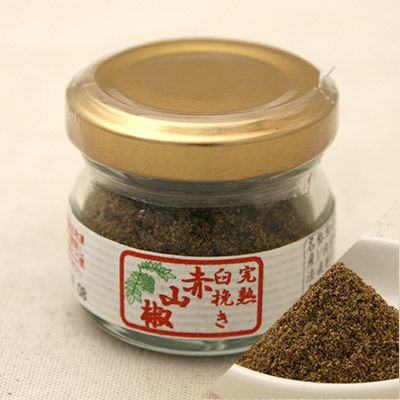
Fully ripened ground, red sansho.
End of September to mid-October
Compared to the regular green sansho,red sansho has a more refined flavor with less bitterness and spiciness. Waiting until the sansho has fully ripened places a significant strain on the sansho tree,therefore very few farmers make the effort to produce this.
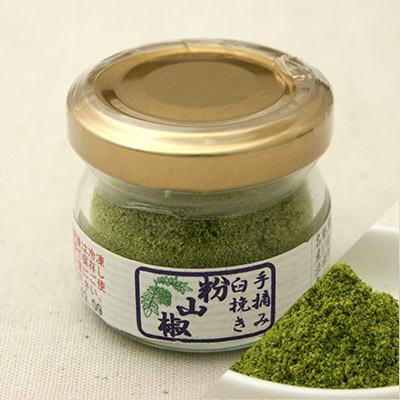
Handpicked,ground sansho powder.
8g bottle
End of September to mid-Octobe
Hand-picked and carefully selected sansho ground using am ortar and pestle.We take care to grind slowly in order to avoid heat based flavor degradation.Thereby preserving the citrus flavor and vibrant green color.
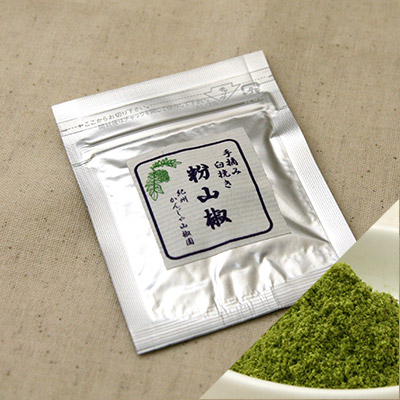
Handpicked, ground sansho powder.
4g sachet
End of September to mid-October
Hand-picked and carefully selected sansho ground using am ortar and pestle.
We take care to grind slowly in order to avoid heat based flavor degradation.
Thereby preserving the citrus flavor and vibrant green color.
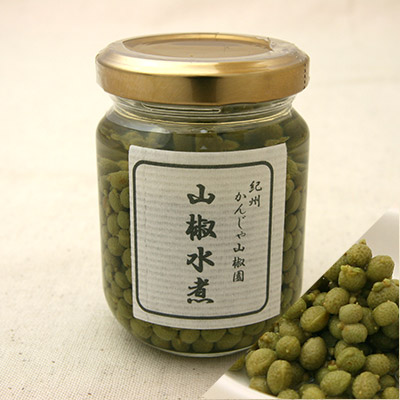
Boiled sansho
Sansho boiled in salt water. With a variety of uses ranging from a topping for fish, meat and stewed items to an ingredient in dressing, mayonnaise and sauces.
With its characteristic vibrant green color, it can add to the aesthetics of many dishes.
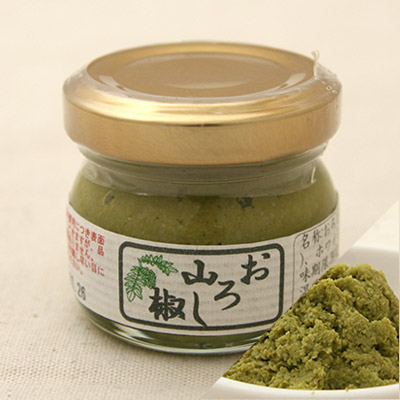
Grated sansho
Raw sansho grated into a paste. Can be used in place of wasabi to compliment dishes such as sashimi, soba, chilled noodles and natto (fermented soy beans).It also works well with BBQ meat or sausages.
It can also be used in dressings or sauces to easily bring the invigorating fragrance and spiciness of sansho to your meal.
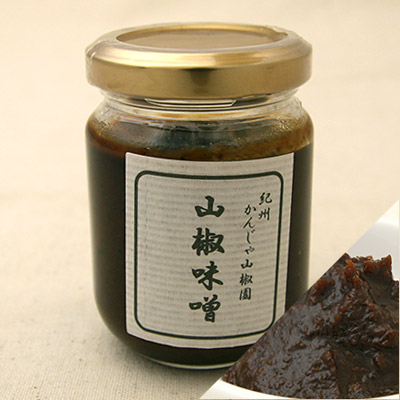
Sansho miso
Made with red miso from taken from the famed Kishu Yuasu facility.
It can be used as just at oppingf or rice or used in such dishes as traditional "dengaku", topping for daikon radishes, with vegetables sticks or as an ingredient in dressings.
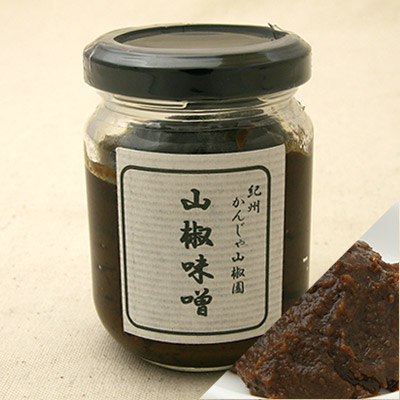
Sansho Miso
(spicy version)
Made with red miso from taken from the famed "Kishu Yuasu" facility.
It can be used as just a topping for rice or used in such dishes as traditional "denraku",topping for daikon radishes, with vegetables sticks or as an ingredient in dressings.
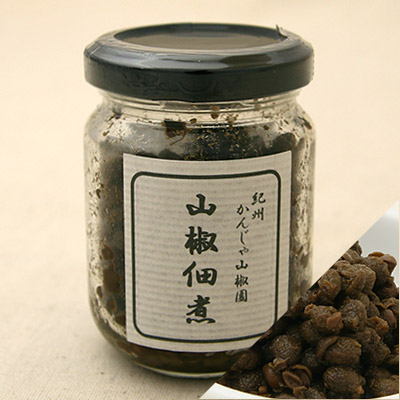
Sansho Tsukudani
(Rich soy sauce version)
Soft budo sansho made with locally produced natural soy sauce.
Biting into the large grains allows you to fully experience the delicious flavor of sansho.
Often eaten as an aperitif, with rice balls or traditional "ochazuke".
Also works as a complement for fish and fried rice dishes.
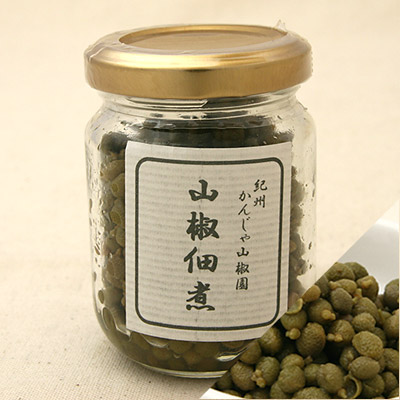
Sansho Tsukudani
(White soy sauce version)
Soft budo sansho made with locally produced natural soy sauce.
Biting into the large grains allows you to fully experience the delicious flavor of sansho.
Often eaten as an aperitif, with rice balls or traditional "ochazuke".
Also works as a complement for fish and fried rice dishes.
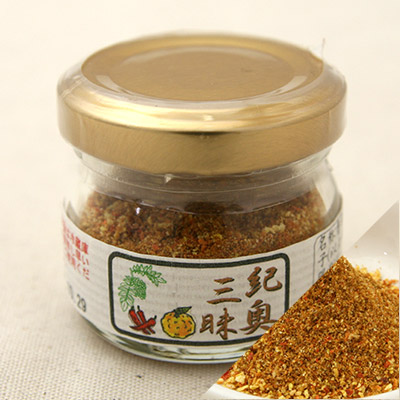
Kiou Zanmai
"A luxury from Kiou"
Taken from deep in the valleys of the Kishu region, our original spice blend of sansho,Japanese citron and cayenne chilli.
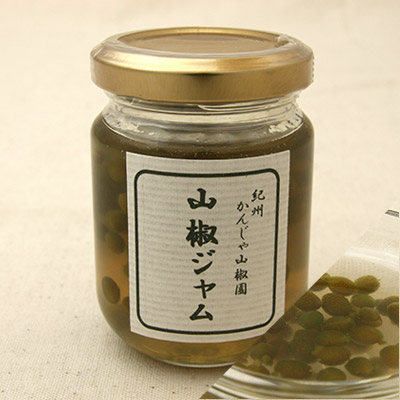
Sansho jam
Made from early harvest sansho and prepared slowly and thoroughly over time,we have produced a jam which preserves the refreshing fragrance and color,unique to sansho.
The spicy flavor is a little milder such that it can well suit desserts such as ice cream or cheese cake.
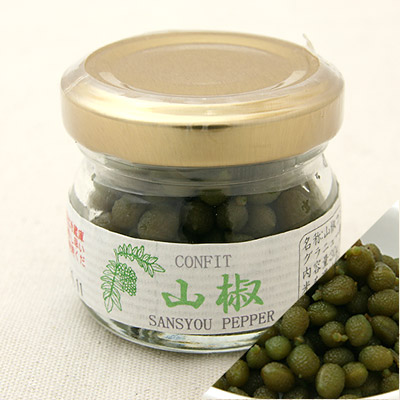
Sansho confit
A confit made from a blend of sansho and sugar. A more adult orientated version of a traditional confit.
Excellent with pancakes,chocolatea nd traditional japanese sweets.
An exciting new addition to anyone's dessert repertoire.
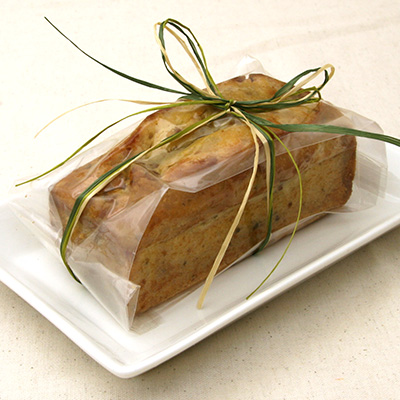
Sansho poundcake
(Green ribbon)
Handmade from sansho and orange peel.
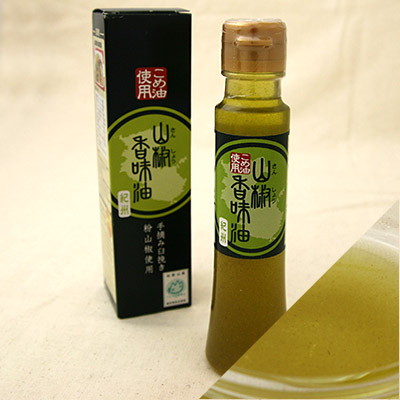
Sansho flavor oil
Made via collaboration with Wakayama made rice bran oil,our original sansho flavor oilh as been recognized as one of Wakayama's superior products by its inclusion in the "Premier Wakayama" range.
Using hand picked "budo sansho", ground carefully into a powder via a mortar and pestle to ensure no loss of flavor, before being mixed with the oil. We are confident you will be able to enjoy the unchanged invigorating taste of sansho.
Please try it as an addition to traditional schools of cuisine such as Japanese, French and Italian food and many others.
Please experiment with it as a salad dressing, carpaccio sauce with chilled tofu or as a compliment to meat and fish dishes.
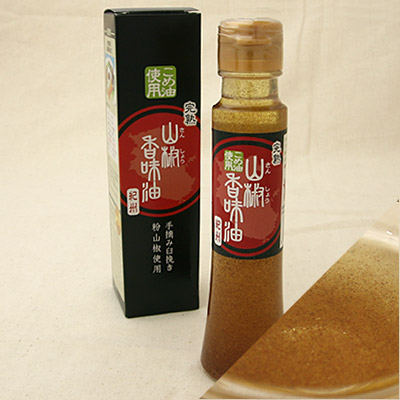
Sansho flavor oil
(fully matured)
Made via collaboration with Wakayama made rice bran oil,our originals ansho flavor lio has been recognized as one of Wakayama's superior products by its inclusion in the "Premier Wakayama" range.
Using hand picked "budo sansho",ground carefully into a powder via a mortar and pestle to ensure no loss of flavor,before being mixed with the oil.This oil brings the unique mellow spiciness of fully matured sansho to your cooking.
Please try it as an addition to traditional schools of cuisine such as Japanese,French and Italian food and many others. Please experiment with it as a salad dressing,carpaccio sauce with chilled tofu or as a compliment to meat and fish dishes.
Non Sansho Products
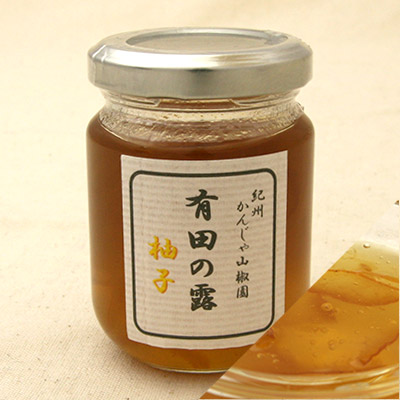
"Arida no Tsuyu"
Japanese Citron Marmalade
Marmalade made with citrons from the Kishu region, preserving the fruit's natural fragrance and color.C an be eaten with crackers or bread or as a topping for dessert items such as yoghurt,ice cream and cheesecake.
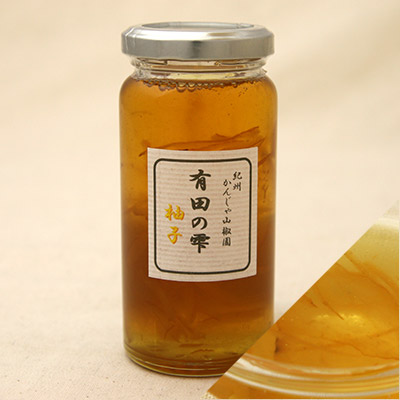
"Arida no Shizuku"
Japanese Citrons in syrup.
Kishu citrons preserved in syrup complete with citron peel shavings.Can be added to carbonated water or hot water to make a delicious drink or used as a topping for dessert items such as yoghurt, ice cream and cheesecake.
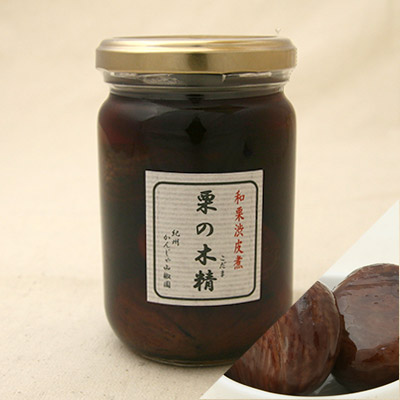
Stewed Chestnuts
(with inner skin)"Kuri no mokusei (kodama)"
Made using carefully selected fresh chestnuts from the local area.Boiled as many times as is necessary to remove all the tannic acid and then boiled with sugar until the sweetness has been penetrated the core of each chestnut. Delicious when taken with tea or coffee. Can also be used as an ingredient for cakes and confectionary items.
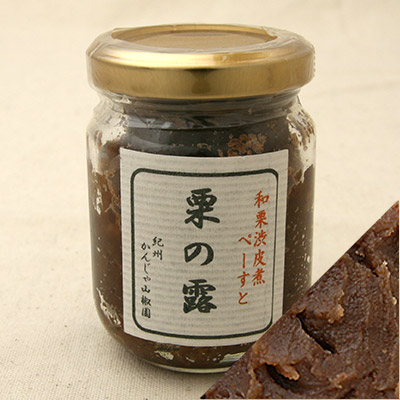
Stewed Chestnut inner skin paste.
Pureed into ap aste.C an be combined with fresh cream to make a whipped cream perfect for aM ont Blanc cake.Al so works well with bread or crackers.
Kanja Sansho Farm
Address:Wakayama Prefecture, Arida-gun, Aridagawa Town,Miyagawa 129Owner: Fuyuki Nagaoka
Business enquiries for restaurants and large scale orders.

